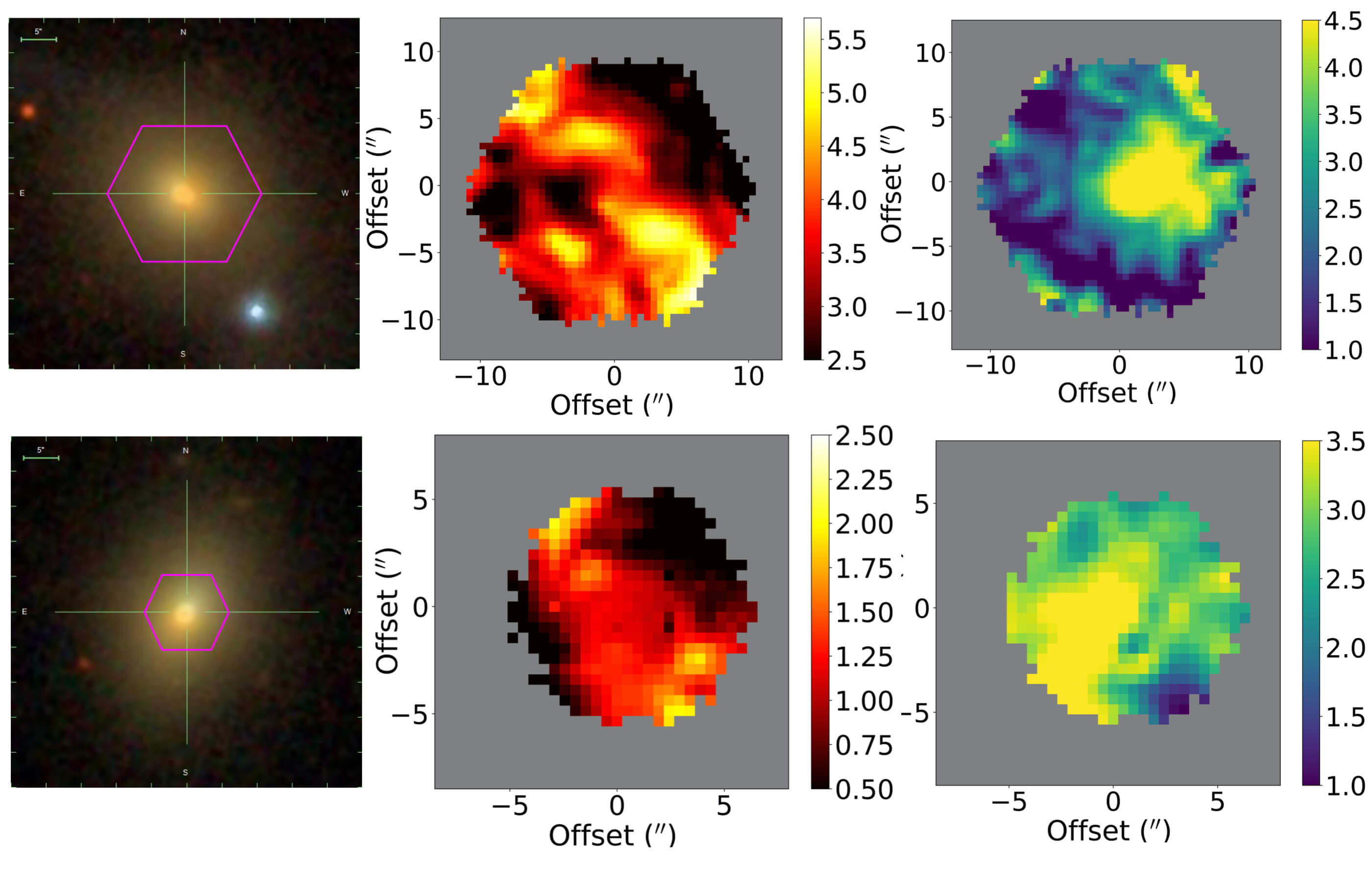Inflowing cool gas in red geysers : Roy et al. 2021b
A large fracion of red geysers host significant amounts of cool neutral gas in the interstellar medium (ISM), traced by patchy and clumpy sodium absorption doublet (NaD) signature. At times, the NaD equivalent width > 4 A. In most cases, this cool gas is spatially offset from the warm ionized gas, traced by Hα, indicating they trace completely different activities inside the same galaxy. In the figure below, the left panel shows the optical image from SDSS, the middle panel shows the ionized gas tracing large scale outflowing wind while the right panel shows the cooler gas, traced by NaD. Clearly, the cool and the warm gas occupy different regions in the galaxy.

A detailed extraction and analyses of the ISM component from the NaD signature indicates that most of the cooler gas is actually redshifted. Redshift in absorption means inflowing into the galaxy. We detect infalling cool gas in majority of the red geysers, particularly those which are radio-detected. We do not detect any such inflow signatures in our matched control galaxies. These might indicate fueling of the central radio-mode AGNs in the red geysers.

The figure above show the stacked NaD signal (from ISM only component) of the radio detected red geysers, non-radio detected red geysers, radio-detected control and non-radio detected control galaxies. We see that the radio detected red geysers (red) show the highest amount of redshift (and hence inflow) into the galaxy. For more details, please check out Roy et al. 2021b for more details.